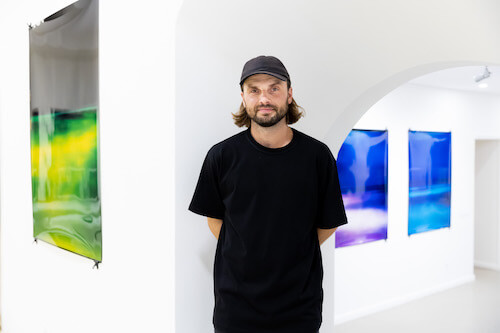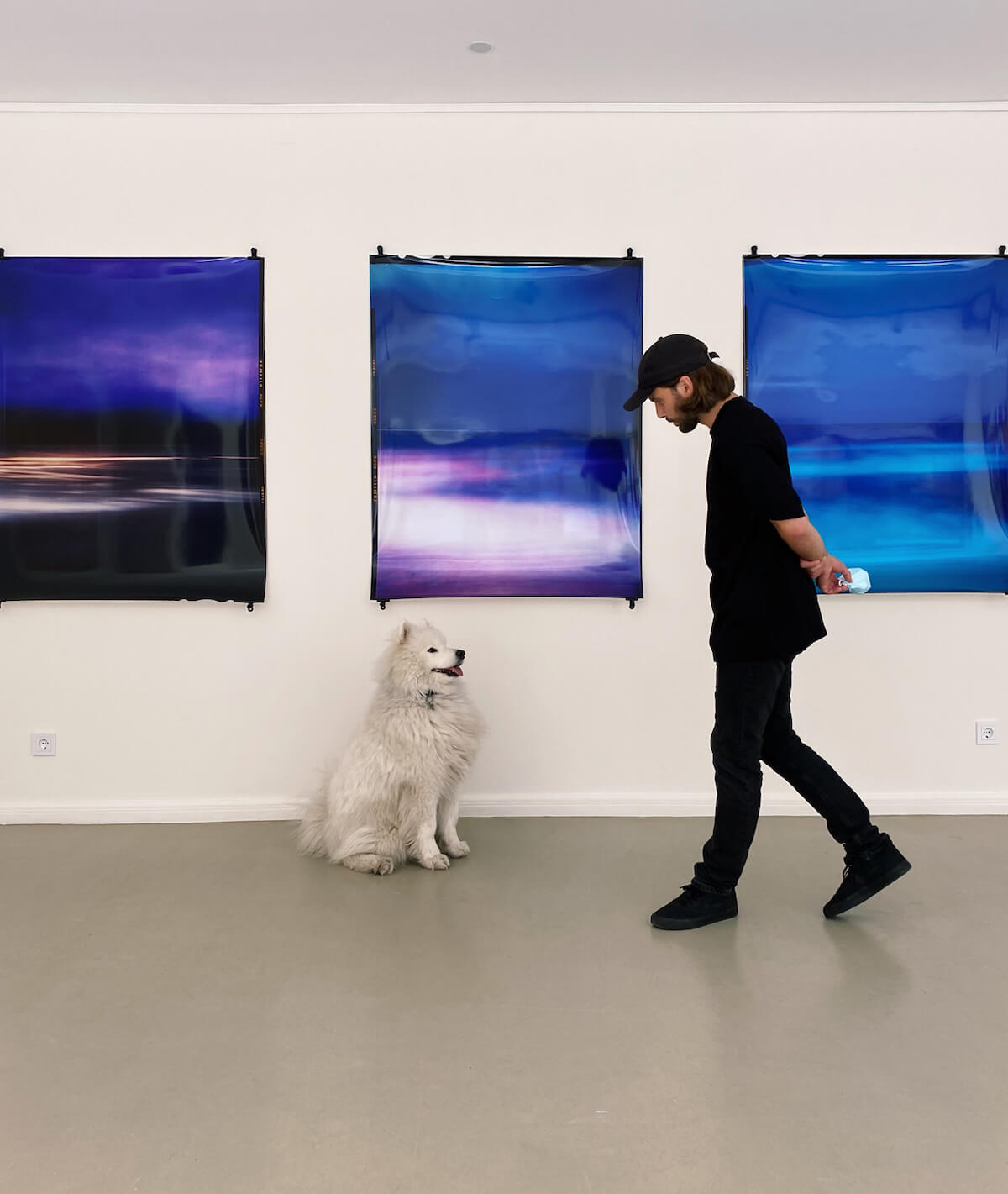Q: Tell us a little bit about your background!
I was born and raised in Palanga, near the Baltic Sea, graduated from the Vilnius Academy of Arts with a degree in audiovisual arts. I worked as a stills photographer on film sets, advertising and other various photography projects for a while. I participated in several group reportage and portrait photography exhibitions in Lithuania.
Q: When was the moment you realized you wanted to pursue photography professionally?
It was a rather unexpected thought half a year before graduating. Quite abstractly, but passionately, I realized I wanted to study photography. For five months I tried to learn the basics of drawing and composition privately. I didn’t go to any art school before and decided to enroll in an art academy. Surprisingly, I succeeded.
Q: Who or what do you turn to when you are having trouble getting inspired?
Maybe super talented minds work differently, but it seems to me that inspiration isn’t some ephemeral moment suddenly emerging from nowhere. Going deeper and deeper into the field of concern, you inevitably find more and more answers or little hints. Of course, sometimes this process slows you down. In Lithuanian, inspiration (įkvėpimas) literally means “breathe in”. So, breathing out (temporal lack of inspiration) is an integral part of the process. Because of this contrast, (sometimes not an easy one) it is a lot of fun to discover something.
Q: What would you say is the hardest thing about your profession?
When you work with assignments, most often you know the boundaries. You have specific field of work. It’s quite different with personal projects. I am not saying it’s necessarily more difficult, but it’s a distinct space. To create the new worlds and be responsible for them. As my friend once said – you are alone in a swamp slowly sinking and you have to make your own tools from scratch to figure out how to get out (or not). There are moments, when I really love those swamps.
Q: Showing microplastics in the ocean must have been a hard concept to bring alive on Analog photos. How did you come up with the idea for your winning work, “New Seas”?
I’ve spent a lot of time just looking into the water. And I asked myself, how to show what is invisible? What lies beneath the surface. I found revelation in Timothy Morton’s idea, that climate change is hyperobject, an incomprehensibly large object that extends over time and space, knowable in parts, but never all at once. I realized that this model brings my gaze back to the sea where microplastic – particles that are barely visible (or completely invisible to the naked eye) but at the same time are everywhere in the ocean. Like a synthetic plankton of various colors, an invisibly wandering super organism. I realized that the white ridges of waves create a vast, white-gray paper in space and time. In order to reveal what is invisible, I only have to fill it with light. It was cooperation between me and the sea. We were creating together.
While addressing profound and multi-layered problems of the climate crisis, it was also really important for me to maintain slow and meditative analog process from the beginning to the end. All pieces were photographed on slides, with a large 4×5 format camera. Prints were done by hand, in a complex and rare reversal chromogenic way. Series about the water, were born in the water.
Q: What was the most memorable moment for you in your work?
There is a term in Zen philosophy “controlled accident” which inspired me greatly. I don’t make any corrections with a computer, don’t adjust the composition or straighten the horizon line, which often tilts due to the water-washed tripod, I don’t correct colors, clean dust or scratches which emerge during slide development. The sea waving at spontaneous intervals and intensities, create an ever-changing pattern for color. And I contribute to a different part of spontaneity. So without turning your head too much, the process becomes very enjoyable. There is not much room left for hesitation, the action becomes very clear. Disappears all what is unnecessary . So there wasn’t just one memorable moment, it was a really interesting process. It took up to 4 hours to create one image. During that time I often found myself in some kind of meditative state and everything around seemed to merge. The sea, me, the wind, the light, the darkness became something indivisible. I had never experienced this before.
Q: Why did you want to enter this particular photo into the IPA?
I spent a lot of time near the Baltic Sea, which is one of the youngest in the world, but already one of the most polluted. So, these issues interested me quite naturally. Not to sound arrogant, but I’ve never before been so confident of what I am doing. After experimenting for a while, I found a visual narrative method and a perfect text to go with it. And probably for the first time in my life, I felt such creative bliss “wow, this is it”. Then, I thought, it would be interesting to share these visions. To talk about well known topics in the newly discovered forms.
Q: What does winning this competition mean to you?
Of course, it is nice to be recognized. It encourages to carry on. To me really important thing is to contemplate (talk about) our impact to nature. I hope that New Seas symbolizes not only changes in the seas and the ocean. A very important question for me is how the unforeseen side effects of our way of life could form the basis for global action to develop new and sustainable models. Competitions like IPA gives opportunity to discuss these issues globally and be widely seen. And that, I think is foremost victory.
Q: Do you take photos in other genres as well?
I worked in advertising, on film sets. I’ve spent a lot of time taking pictures of museum exhibits. But now I focus on creating personal projects. My primary task is to come up with an idea then needed genre follows quite naturally. Although I’ve started to notice a tendency – I depict our traces in environment, but not us. So these are the landscapes without people.
Q: If you could do anything or go anywhere, what would your dream photography project be?
I photographed all series by the Baltic Sea. Although it symbolizes all other seas, I would like to go to the ocean. Mighty waving should create whole new patterns. It would be great fun to see those
Q: What is next for you, are you working on anything right now?
I just had my first solo exhibition featuring New Seas. It’s like a new beginning for me. I will definitely return to the Seas. Currently I am developing a next project. Step by step it forms a shape. I am slowly crawling out of the swamp.
Q: What would be your main piece of advice to photographers just starting out?
I don’t feel in a position to give good advice. I would just like to say that the field of art provides the necessary tools to construct stories in unique ways. Photography, like poetry or music, can express what cannot be said in words. I wish all to experience that joy.


